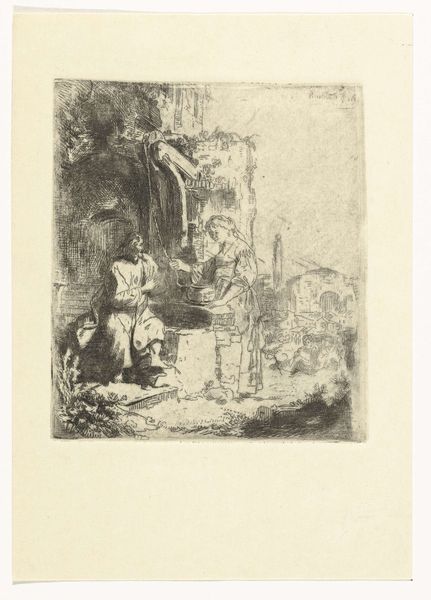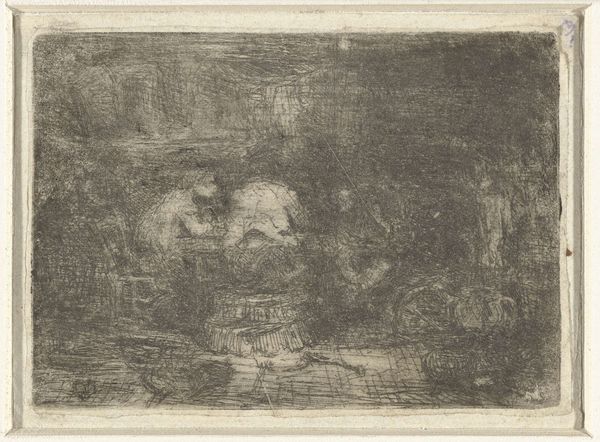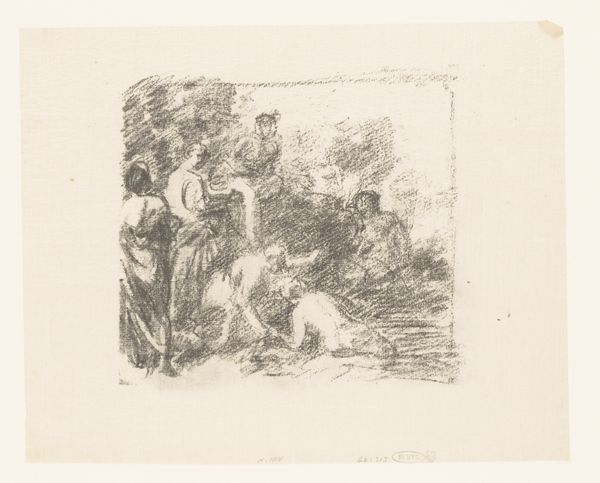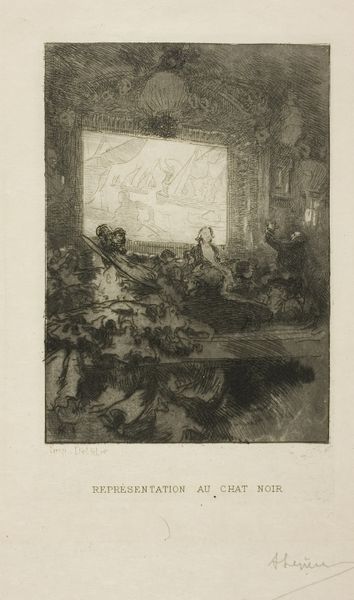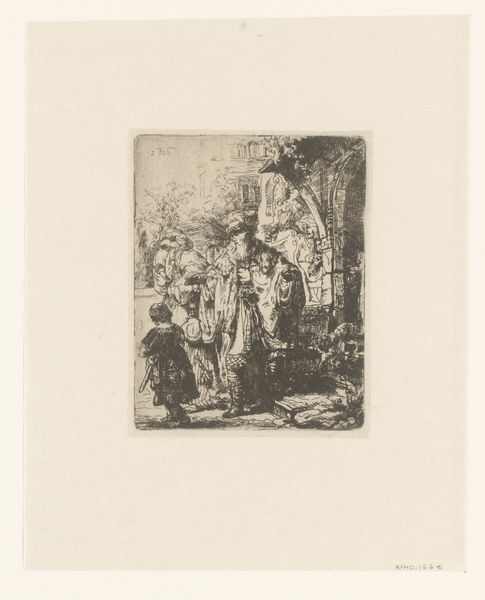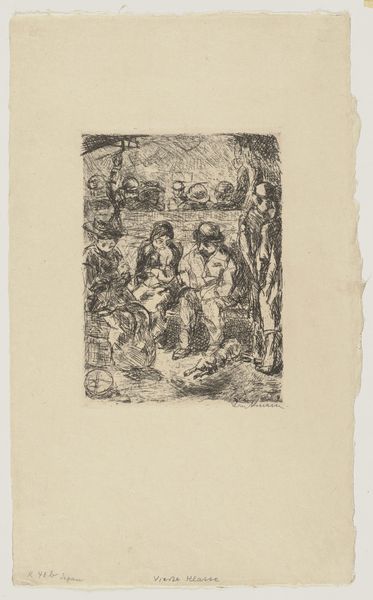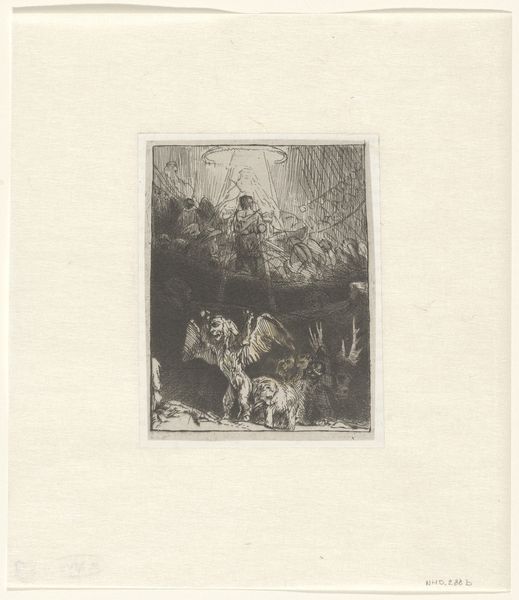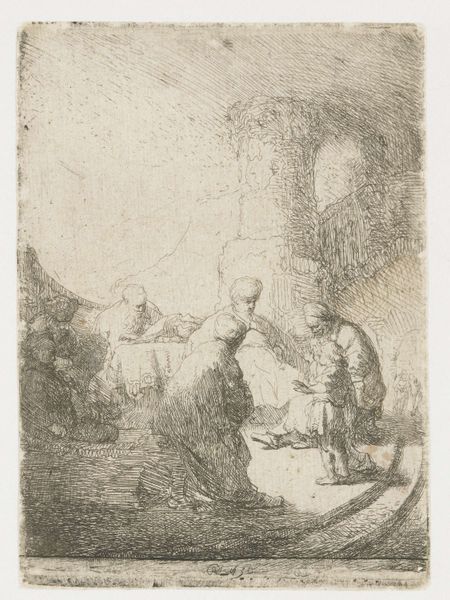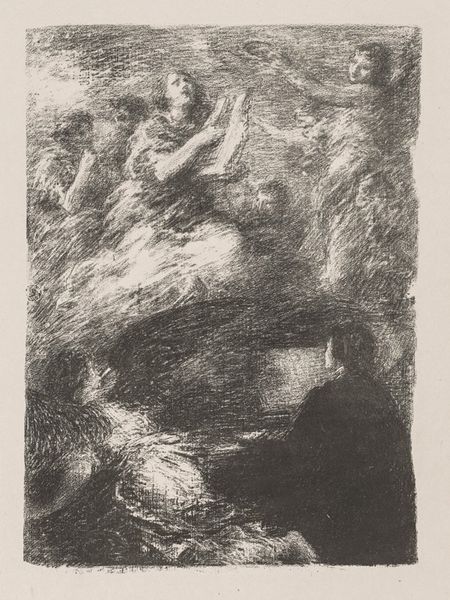
drawing, print, etching, paper, ink
#
drawing
#
narrative-art
# print
#
etching
#
figuration
#
paper
#
ink
Copyright: Public Domain: Artvee
Editor: This etching, "The Adoration of the Shepherds," created by James Ensor in 1888, seems incredibly raw. It's all lines and ink, barely anything defined. What’s your take on this? Curator: Look closely at the lines, the way they are applied. Ensor wasn't just illustrating a biblical scene; he was physically working with the materials to almost *construct* the idea of divinity and humble observation. The ink itself, the etching process – a corrosive act upon the plate – contrasts starkly with the supposedly gentle subject matter. What do you think Ensor is conveying about the process of making art when creating this juxtaposition? Editor: That’s interesting…it's like he’s deliberately roughing up a sacred story. Is that a commentary on religion itself, maybe its commercialisation or… misinterpretation? Curator: Precisely. Consider also that Ensor was deeply engaged in social critique. How does this seemingly devotional scene also reflect his interest in the material realities of labour and production in 19th century Belgium? Think of the artisan involved in printing-- what sort of repetitive processes would Ensor know they used in production, for example, printing wallpaper, or in printing religious ephemera to be sold to the masses? What parallels might Ensor be inviting here? Editor: So, the image is not just *of* a religious scene, but the method of making it speaks to social and economic concerns of the time? Curator: Exactly. Ensor makes us aware of both the act of devotion, and the process of production behind image-making itself. It makes us reconsider any passive acceptance of icons. Editor: I never thought of it that way! It’s about the materials and the social landscape that formed this piece and what it represented. Curator: And that's how Ensor elevates the everyday and questions established norms, simultaneously.
Comments
No comments
Be the first to comment and join the conversation on the ultimate creative platform.
